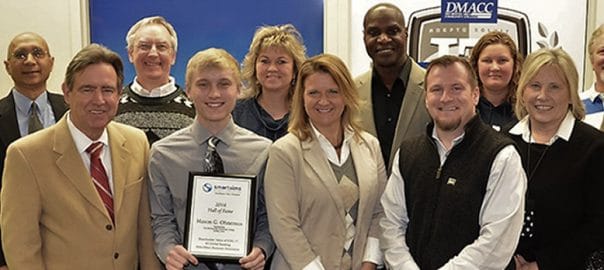
The article below is written by Dan Bielinski, business instructor at Madison Area Technical College.
As a relatively new Business Management Instructor (in my third year) after a nearly 30 year career in industry and consulting, I have found MikesBikes Introduction an extremely helpful tool for teaching real-world business concepts. In the spirit of sharing among educators to benefit students, I am privileged to discuss some of the approaches that have worked for me.
We utilize the MikesBikes Single-Player in our Intro to Business Course. Students work in teams and compete against the computer. There are two practices I have found very effective:
1. I cover course material on Strategy, Marketing (the 4 P’s), Operations and Finance, primarily through case studies and other active learning techniques. I then use MikesBikes and help students “connect the dots” and apply these concepts in the simulation.
Both direct student feedback, and the kinds of questions they start to ask, tell me the simulation is taking student understanding to a deeper level. Much like moving toward case studies and away from lectures deepened learning, the simulation took learning provided by the case studies to a deeper level.
2. I have students work in teams of three. Each Team designates a VP-Sales & Marketing, a VP- Operations, and a VP-Finance. Each of their “bonuses” is based 50% on maximizing a specific departmental metric, and 50% on Shareholder Value growth. All three have to agree on all decisions.
The bonuses take the form of hefty extra credit points. For example, the VP-Sales with the best sales growth rate wins extra credit points; similar for the other positions. However, EACH member of the Team with the highest Shareholder Value wins extra credit points.
This simulates the dynamic that happens in actual businesses between Departmental Managers. It gets pretty real— in one case, a student was still yelling at a teammate 20 minutes after the simulation ended—“You hosed us; all you cared about was your Department.”
Last semester, we started using the MikesBikes Multi-Player in our Capstone Leadership Course. Students still work in teams, but now compete directly against each other to maximize shareholder value. The experience exceeded my high expectations. Key learnings we were able to drive home included:
- The business mindset of always continually looking for an advantage or edge. Since all Teams start out identically, if they all follow similar strategies, no one will stand out. However, since the reports allow you to figure out- and copy, others’ strategies, you must continually look for a new angle.We connect that to running your Department—for example, if you run a Customer Service Team, how can you give your Sales force “something to sell” that your counterparts are not doing. And since your counterparts can probably copy you if it works, are you thinking about the next improvement? Etc.
- Since all Teams start out with identical positions and decisions to make, and the end results vary wildly, the core source of differences in results is the members of each Team. This leads to a discussion of team makeup— complementary skill sets, depth of understanding of the “business”, ability to work together, etc. It is the most powerful way I have seen to teach the importance of teamwork.This easily transitions into how you build your department’s team— hiring into your weaknesses, knowing that both deep skill sets and ability to be a team player are vital, etc.
- The simulation allows us to help students develop a broader business perspective, and to drive home the importance of such a perspective. For example, most companies do not want a marketing expert running Marketing; they want a business person who has deep knowledge of marketing. Same for Operations, Finance, and so on. Being able to “see the big picture” and have “your world” be bigger than just your department is vital.
I looked at other simulation packages, and concluded that MikesBikes had an optimal level of complexity. It is not simplistic-all the lessons above can be taught, yet it is not so complex that it takes students a long time to learn. I was able to do a self-paced tutorial of a five year simulation using a screencast (35 minutes total run time), that enabled students to learn the basics on their own outside of class (using the online version of MikesBikes).
The service and support from Smartsims has been absolutely exceptional- and I say this as a former Customer Service VP. I was comfortable recommending to our Dean that we expand our relationship to the Multi-Player only because of the 18 prior months of phenomenal support.

